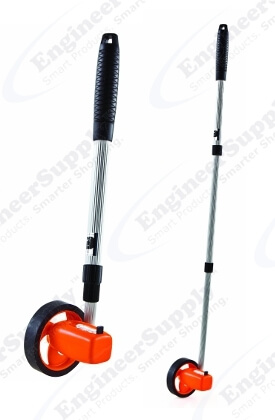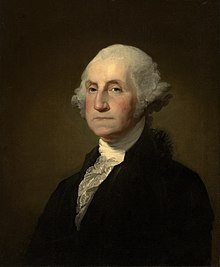In a bad collision such as one with death or serious injury, it is wise to hire a professional to collect site data as soon as possible. However, even in a bad wreck, when the amount of insurance coverage is limited it may not be cost-effective to retain an expensive expert.
Police Investigation
In South Carolina, the police use a standardized report form (TR-310) to record data at a crash site. Quite a bit of useful information about a collision is recorded on this form. This information includes facts like the location and time, specifics about the vehicles, drivers and witnesses, descriptions of vehicle movement and actions, weather, speed, and causation statements as well as a lot of other data.Nevertheless, relying solely upon the police investigation report for your forensics is sometimes unwise. The report is usually incomplete or the investigating officer may rely on information provided by the other driver, much of which may be inaccurate. Therefore, smart people often gather their own forensic data from the collision scene.
Safety First

If you intend to visit a collision site to collect forensic evidence, take safety precautions.
- Definitely wear a safety vest to make yourself visible to other drivers.
- Keep your head on a swivel and do not trust people to keep a proper lookout.
- Try to visit the scene during a bright day and when traffic is light.
- Park your vehicle in a place where it is not a hazard to road traffic.
Measurements and Collision Site Evidence.
Skid Marks
Road traffic and weather will erase skid marks fast so it is important to act soon if you want this data. When you measure a skid mark, look carefully to find the faintest beginning of the mark. That is the point where you begin to take your measurement of length.

I use bright green spray paint to mark the beginning and end of a skid mark, and also to mark any other relevant tire marks (see below). The best simple tool to measure length is a rolling measuring wheel. Use a tape measure to measure width of any skid marks. If possible, bring a witness with you to help you record the data and stay organized. Keep detailed notes with pad and paper.
Scrub marks
One possible cause of a change of a sudden change in direction is a collision that redirects the vehicle's direction of travel. Scrub marks are important because they help confirm the location of where a collision impact took place. Such data as a scrub mark or gouge (see below) in the road surface is important for presentation of evidence in a trial. Even without an expert, an attorney can argue to a jury about what a scrub mark or road gouge mark represents. It is common sense and reliable information that goes into the mix during jury deliberation.
Post Collision Skid Marks
Try to find evidence used to determine a vehicle's post collision direction of travel. Look for sideways skid marks and yaw marks indicating a post-collision spinning vehicle.
Road Surface
The quality of the road surface is a factor experts consider when figuring out speed. Accident reconstruction experts talk about a variable number called the coefficient of friction. An accurate coefficient of friction is necessary to estimate speed. Without this variable corroborated and explained, some judges may sustain a "speculation" or "no foundation" objection and prevent your expert from stating an opinion on the other driver's speed. Whether you decide to hire an expert or not, you should still try to establish evidence about the road surface. You do not need to be an engineer to make accurate observations. Here are some of the items to think about recording in your notes and pictures about the scene.
- The wetness or dryness of the road surface at the time of the collision;
- The grade of the road (level, downhill, uphill);
- The type of road surface (asphalt, concrete, gravel);
- The quality or age of the road surface (older road beds are degraded and looser than newer paved roads); or
- The amount of vehicle fluids accumulated.
Make notes about the road surface in the area of the collision. Document your observations of the road surface with notes, tagged photographs, or short movies.
The coefficient of friction data is not the only thing on the road surface you need to look at. Look for scratches and gouges too. The forces at work in a motor vehicle collision can be so powerful that the road surface itself will be marred. For example, two cars in a head on collision will tend to gouge out a chunk of the road surface at a point of impact. The gouge marks the exact location of the point of maximum impact between vehicles.
Alternatively, if the vehicle rolls or overturns, the metal as the car slides along the surface may create scratches and other marks. If you see such marks at a collision site, spray paint a circle around it and record the exact location and distance.
The coefficient of friction data is not the only thing on the road surface you need to look at. Look for scratches and gouges too. The forces at work in a motor vehicle collision can be so powerful that the road surface itself will be marred. For example, two cars in a head on collision will tend to gouge out a chunk of the road surface at a point of impact. The gouge marks the exact location of the point of maximum impact between vehicles.
Alternatively, if the vehicle rolls or overturns, the metal as the car slides along the surface may create scratches and other marks. If you see such marks at a collision site, spray paint a circle around it and record the exact location and distance.
Vehicle Position
Record the exact location where the vehicles in a collision came to rest. Use your spray paint to draw a corner mark. Look for fluid spills and other evidence on the road surface to confirm a resting location of a vehicle with a damaged engine.
Also look for any debris fields, or other evidence left at the site of a collision. For example, in an emergency, EMS personnel may remove shoes or cut away clothing and toss them off. Record the location and nature of any collision related debris.
Damage to Physical Objects
Observe and record evidence to physical objects along the area of a collision. Look for dented guard rails, signs, and trees.
Record The Forensic Evidence
Use your camera to take a good photographs of the evidence. Try to include background features in the pictures--such as storm drains or signs--to help with reconstruction of the accident. Take closeup pictures, and pictures from a distance. Take pictures from different angles, going and coming, and sideways. Make movies. For example, start the camera and walk along the skid mark shooting the mark as you walk. Also, take pictures of any relevant traffic control devices such as speed limit, stop, or yield signs, or traffic signal lights.
Make a Diagram
Make a diagram of the collision site. My favorite trick for creating a diagram of a collision site is to use Google Earth and obtain a satellite image of the site. Lighten the image and print it out. Take several copies of the satellite image with you to the scene to make your drawing. If possible, find landmarks on the satellite image that you can use as background for photographs of road surface forensic evidence. Shoot pictures from different angles to facilitate triangulation and understanding. Such images will help orient your drawing, improve its accuracy, and deflect objections that the pictures tend to confuse.
At trial in South Carolina, the diagram you draw does not have to be perfect. The foundation for admitting it into evidence is that your diagram is sufficiently accurate to illustrate the testimony about how a collision happened. Still, I would strive to make it as accurate as possible.
Make separate diagrams for different sets of data. For example, on one, draw important points of interest such as the beginning of a skid mark, a gouge, or a scrub mark, and the measurements associated with each aspect. On another show the vehicle resting positions and any fluid spots on the roadway. On an another, show traffic control devices, etc.
Keep Records and Organize Your Work
Take good notes about your measurements as you work. Once you finish gathering the information, take some time to sit down and organize the data. Organizing the data before leaving creates an opportunity to spot holes in the data, and to correct notes that are hard to read or understand while everything is fresh in your mind. If necessary, supplement the forensic investigation without having to return to the scene later on.
Save all of your work. Even your scribbles.


